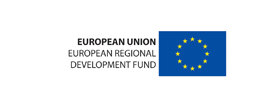|
The project to develop innovative anti-terrorist systems is entering the experimental verification phase
Tuesday, 23 November 2010 15:52
|
|
|
In an era when even a single terrorist attack may bring about massive destruction, equipment used to control border traffic must be ever more sensitive. The AiD (Accelerators & Detectors) research project run in IPJ Świerk for nearly two years now is aimed to develop two globally unique scanners of hazardous substances that may find their applications as anti-terrorist systems. Both devices are capable to quickly and efficiently detect such substances in containers processed in cargo terminals, railcars passing large railway nodes and/or trucks crossing border checkpoints. The project needed a separate experimental hall. One of the IPJ halls in Świerk has recently been appropriately re-furbished and the project is entering an intensive phase of experimental verification and performance tests. One of the main project objectives is to develop demonstrator of a border checkpoint radiographic scanner capable to detect fissile nuclear materials, conventional explosives, and selected toxic substances that might be illegally trafficked hidden within cargo crossing the border. The scanner will be equipped with an unique accelerator capable to generate beams of X-rays of two energies. „Two radiation energies will help to differentiate thick layers of light-element substances from thin layers of heavy-element substances. That unique approach has not been yet applied in any of the scanners routinely working at border cargo checkpoints in various countries” – points out Professor Marek Moszyński, Head of the team responsible for detectors for the AiD scanners. The scanned truck or container will be moved between a two-energy accelerator generating fan-like shaped X-ray beams and a long vertical bar of silicon radiation detectors. The beams will be pulsed at 100-500 Hz frequency. The acquired data (relative intensities of transmitted X-ray beams) will be processed into a collection of truck/container cross-sections. „We will be able to tell approximate density and average Z-number of materials detected in each area visible in the displayed cross-section image” – points out Joanna Iwanowska, a PhD student working on the AiD project. Because of a possibility that some living organisms are inside the irradiated truck/container, maximum doses of ionizing radiation have been consulted with International Atomic Energy Agency in Vienna. Demonstrator of the scanner is going to be ready by 2013, first devices to be deployed at border custom checkpoints are to be put in service somewhat later. Scanner capable to detect conventional explosives is another anti-terrorist device currently under development within the AiD project framework. Neutrons emitted by the scanner activate atoms on their way. Various activated atoms de-excite emitting various discrete energy gamma photons (“gamma lines”). Ratio of intensities of individual gamma lines is different for different elements, so the irradiated substance may be identified on the basis of gamma lines emitted by it. Researchers focus their attention on specific methods necessary to determine amount of carbon, hydrogen, oxygen and nitrogen, and that way to tell (at some confidence level) whether some explosives have or have not been detected. Neutron-beam-based scanners will be relatively small, therefore mobile robots used by antiterrorist squads might be equipped with such devices. „Plenty of works in the radiation detection field is necessary to successfully develop a neutron-beam-based scanner. Not only suitable detectors must be developed, but also an extensive gamma spectrum processing software is needed.” – said Łukasz Kaźmierczak, a PhD student working of the AiD project. Physics of interaction of neutrons with matter is also a very complex subject. Research is currently entering an intensive phase of experimental verification and performance tests, which are possible since one of IPJ halls in Świerk has recently been appropriately re-furbished. Young scientists hired to work on the AiD project make up a considerable part of the team led by Professor Moszyński. They already can boast a success achieved at an international forum: members of the team presented eight original scientific papers on the 2010 Nuclear Science Symposium organized in Knoxville, Tennessee by IEEE Nuclear & Plasma Sciences Society. Only one other team among Symposium attendees presented more papers. Particular interest was stirred by Martyna Grodzicka’s paper, which for the first time presented a comprehensive comparison of silicon photomultiplier properties with properties of classical tube photomultipliers. Representatives of interested institutions (border guard, customs, police) consult research on and technical testing of the equipment. Panel expert organized last week in Świerk was yet another occasion for IPJ scientist to learn needs and postulates of future end users. Representatives of industry were also invited to discuss various aspects of manufacturing the anti-terrorist equipment once it is successfully demonstrated. Polish authorities are particularly interested in innovative scanners capable to quickly detect various hazardous materials at border checkpoints since Poland’s northern and eastern border became in 2007 European Union’s borders. X-ray/neutron-beam-based scanners currently under development in IPJ Świerk may help to live up to the highest standards in border control. Beside antiterrorist equipment, the AiD project covers also development of three demonstrators of various medical accelerators for cancer radiotherapy. Total value of the 5-year-long (2008-2013) project is 85.6 million PLN, including EU assistance in the amount of 67.5 million PLN.
|





 Advanced accelerator technologies have been combined in IPJ Świerk with state-of-the-art gamma radiation detection techniques in a project to develop unique anti-terrorist systems: fixed checkpoints to scan trucks/containers and mobile devices capable to detect illegally trafficked explosives. The project is entering the experimental verification phase.
Advanced accelerator technologies have been combined in IPJ Świerk with state-of-the-art gamma radiation detection techniques in a project to develop unique anti-terrorist systems: fixed checkpoints to scan trucks/containers and mobile devices capable to detect illegally trafficked explosives. The project is entering the experimental verification phase.




